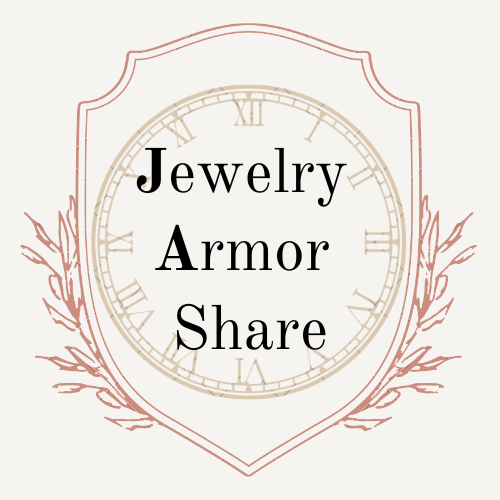Rubies are part of the corundum family. Their red color distinction is what makes them rubies instead of sapphires. Just like any other precious gemstones that are out there, there are different tiers in what the industry considers valuable.
Natural and synthetic rubies have the same chemical composition. Natural rubies are grown from the Earth and their color is also rare to find. Natural and untreated rubies are more expensive in comparison to their synthetic counterpart. Synthetic rubies are created in a laboratory, there are inclusions and clues you can visibly detect under a loupe.
From there, people tend to forget that there are different kinds of rubies (and sapphire) treatments. Here are 3 examples of them.
Heat treatment
It’s a very common and accepted industry practice. If fact, sapphires are created from heat. So, it’s incredibly confusing when people indicate unheated sapphires. I’ve also decided to change my language to indicate no heat treatment instead of just “no heat sapphire.”
As far back as a thousand years, people have found that introducing heat to sapphires will improve their color, clarity, or both. They will pack them into the ground with clay and then bring them into the fire (Gem-A, 2023). This type of treatment is considered very similar to how sapphires are grown. This type of treatment could still be identified as untreated. For heat treated sapphires, these temperatures are high. Dealers will typically identify low heated treatment temperatures to be below 1000 degrees Celsius (Hughes & Perkins, 2019). These temperatures typically won’t involve changing the nature of micro-crystal formation such as rutile silk (Gem-A, 2023). You could see some color improvements happening with lower heated treated sapphires (Gem-A, 2023). Higher temperatures in the 1200-1350 degrees Celsius could cause dissolution of rutile silk which will then significantly improve the clarity as well as make it look lighter and brighter (Gem-A, 2023).
Glass filled sapphires
This practice started recently in the past 2 decades. These are fractures that exist in the gem and to repair them, they are filled with leaded glass (Sun, 2015). It is recommended that you handle them with care, and they should not go through an ultrasonic care cleaning process. Stay away from excessive heat or any acid exposure. According to (Pardieu, 2005) they do indicate glass filled rubies could potentially be more durable than oiled emeralds of emeralds with resin. Glass filled rubies are usually natural and they tend to be the same price as synthetic rubies.
Beryllium diffused sapphires
Are you ready for the drama? This process was discovered in Thailand around the late 1990s – 2000s. The sapphire is heated at a high temperature and is artificially colored through beryllium (paragems, 2003). The problem was it was originally sold as typical heat-treated sapphires.
Gasp. I know. The scandal. The jewelry world was rocked. (pun intended, you should know by now)
It was finally uncovered around a year later what it truly was. The process is a diffusion process and creates a yellow color core center (paragems, 2003). It will change a pink sapphire into an orange color (paragems, 2003). Or a purple red ruby into a purer red ruby (paragems, 2003). You ask around the industry and there’s a lot of polarizing thoughts around it. Most beryllium diffused sapphires are not easily detected as the color change tends to go all the way through the core of the gemstone (paragems, 2003). Sometimes you could see it through an immersion process where you could see a yellow-orange layer (paragems, 2003). One of the signs it could be beryllium diffused is evidence of high heat: such as recrystallization on the surface (paragems, 2003). Ultimately, you can know for sure by sending it to a lab.
Most of the negative opinions are due to the reactions of the origins of the unethical disclosure. GIA reports that the treatment is stable and can undergo typical jewelry care and even ultrasonic cleaning (Emmett et al., 2003). There’s also no surface etching due to re-tipping (Emmett et al., 2003).
So if it’s durable and technically it’s still natural (since its origins are from the Earth). Would you still go for a beryllium diffused ruby?! Honestly, in my opinion I would. What I learned from this is that transparency and disclosure is important in maintaining trust. Once you lose that trust. It’s a long way back to form and build it back.
References
Gem-A. (2023, March 13). Understanding common corundum treatments: Gem-A. Understanding Common Corundum Treatments. https://gem-a.com/understanding-common-corundum-treatments/
Hughes, E. B., & Perkins, R. (2019). Madagascar sapphire: Low-temperature heat treatment experiments. Madagascar Sapphire: Low-Temperature Heat Treatment Experiments. https://www.gia.edu/gems-gemology/summer-2019-madagascar-sapphire-heat-treatment-experiments
Sun, Z. (2015). Beryllium-diffused and lead glass–filled Orange Sapphire. Beryllium-Diffused and Lead Glass–Filled Orange Sapphire. https://www.gia.edu/gems-gemology/summer-2015-labnotes-beryllium-diffused-orange-sapphire
Pardieu, V. (2005). Lead Glass Filled/Repaired Rubies. Asian Institute of Gemological Sciences Gem Testing Laboratory, 1–16.
Questions About Treated Sapphires from Thailand. Beryllium lattice diffused sapphires. (2003, September 18). http://store.palagems.com/bulk_diffusion_sapphire.htm
Emmett, J. L., Scarratt, K., McClure, S. F., Moses, T., Douthit, T. R., Hughes, R., Novak, S., Shigley, J. E., Wang, W., Bordelon, O., & Kane, R. E. (2003). Beryllium diffusion of Ruby and Sapphire. BERYLLIUM DIFFUSION OF RUBY AND SAPPHIRE. https://www.gia.edu/doc/Summer-2003-Gems-Gemology-Beryllium-Diffusion-Ruby-Sapphire-v2.pdf

